Research Highlights
Research Highlights
A selection of highlights culled from publications by HAO staff.
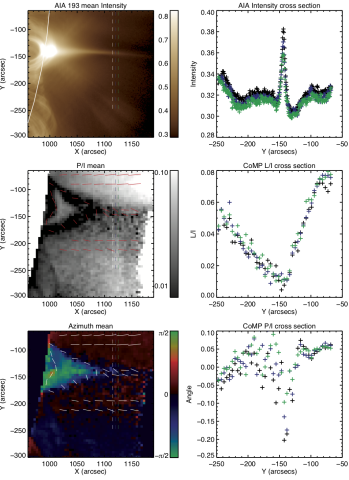
Spectropolarimetric Insight into Plasma-Sheet Dynamics of a Solar Flare
We examine spectropolarimetric data from the CoMP instrument, acquired during the evolution of the September 10th 2017 X8.2 solar flare on the western solar limb. CoMP captured linearly polarized light from two emission lines of Fe XIII at 1074.7 and 1079.8 nm, from 1.03 to 1.5 solar radii. We focus here on the hot plasma-sheet lying above the bright flare loops and beneath the ejected CME.
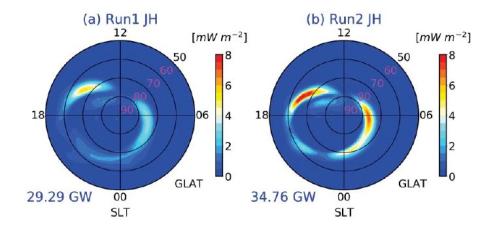
Impacts of binning methods on high-latitude electrodynamic forcing: static vs boundary oriented binning methods
The Earth’s atmosphere is coupled at high latitude to the magnetosphere. This is a crucial region since energy is put into the upper atmosphere of Earth and is redistributed globally. Numerical models such as general circulation models (GCMs) simulate the effects of the high latitude energy input on the thermosphere-ionosphere system.
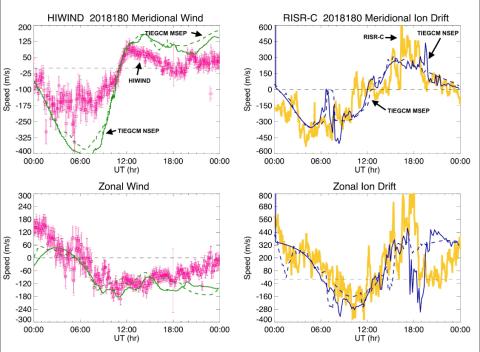
HIWIND Observation of Summer Season Polar Cap Thermospheric Winds
HIWIND (High altitude Interferometer WIND experiment) is a balloon borne Fabry Perot interferometer (FPI) for daytime thermospheric wind observations. In this paper, we examine the summer polar cap thermospheric winds observed by HIWIND with the RISR-C (Resolute Incoherent Scatter Radar-Canada) observed ion drifts and electron densities.
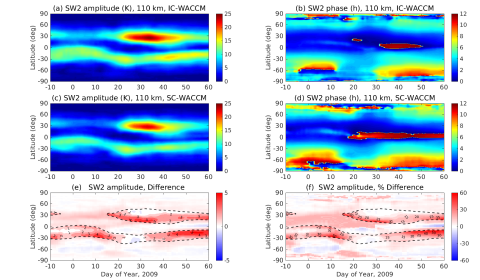
On the importance of interactive ozone chemistry in Earth-System models for studying MLT tidal changes during sudden stratospheric warmings
We use the CESM2-WACCM, to study the importance of ozone in the vertical coupling between lower and upper atmosphere during SSWs. During SSWs, the build-up of stratospheric ozone concentrations at tropical latitudes and its increased asymmetrical distribution carries the potential to affect the generation of migrating and non-migrating semidiurnal solar tides.
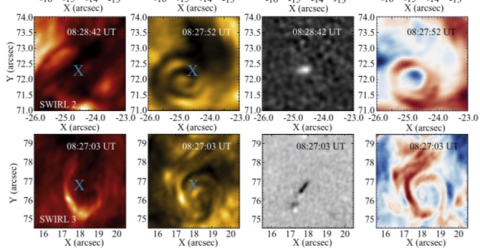
Multiwavelength High-resolution Observations of Chromospheric Swirls in the Quiet Sun
We report observations of small-scale swirls seen in the solar chromosphere. They are typically 2 Mm in diameter and last around 10 minutes. Using spectropolarimetric observations obtained by the CRisp Imaging Spectro- Polarimeter at the Swedish 1 m Solar Telescope, we identify and study a set of swirls in chromospheric Ca II 8542 Å and Hα lines as well as in the photospheric Fe I line.

Upper atmosphere radiance data assimilation: A feasibility study for GOLD far ultraviolet observations
Availability of far ultraviolet observations of Earth’s dayglow by the NASA Global-scale Observations of the Limb and Disk (GOLD) mission presents an unparalleled opportunity for upper atmosphere radiance data assimilation.
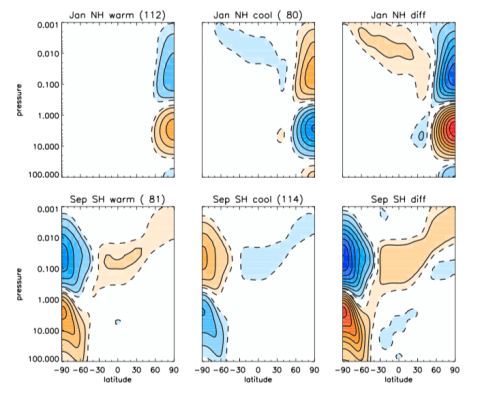
Interhemispheric Coupling Mechanisms in the Middle Atmosphere of WACCM6
Simulations with the Community Earth System Model 2 using the Whole Atmosphere Community Climate Model configuration, known as CESM2(WACCM6), show evidence of dynamical coupling from the high latitudes of the winter middle atmosphere to the tropics and the middle and high latitudes of the summer hemisphere.
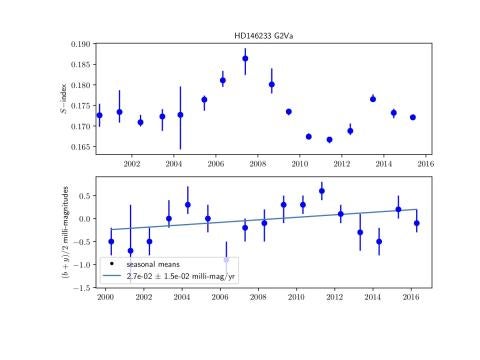
Sun-Like Stars Shed Light on Solar Climate Forcing
Recently published, precise stellar photometry of 72 Sun-like stars obtained at the Fairborn Observatory between 1993 and 2017 is used to set limits on the solar forcing of Earth’s atmosphere of ±4.5 W m−2 since 1750. This compares with the +2.2 ± 1.1 W m−2 IPCC estimate for anthropogenic forcing.